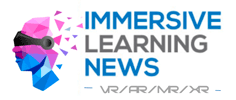Research firm Omdia has published its latest predictions for the virtual reality market claiming that 6.4m consumer VR headsets will be sold in 2020, with their owners spending $1.1bn on content.
The company reckons that by 2025, 45m VR headsets will be actively used by consumers, who’ll spend $4bn on content that year.
All good, although we’ve been bitten by analyst forecasts before in this space: in 2016 another firm, CCS Insight, boldly predicted that there would be 72m smartphone VR headsets sold in 2020 – yet that entire category has since slumped. That said, Omdia is fairly conservative compared to yet another research firm, Juniper Research, which has just put out some figures claiming consumer VR content will be worth $3bn in 2020, not the $1.1bn claimed by Omdia.
Quelle:
Image by Damir Khabirov / Shutterstock.com
https://www.vrroom.buzz/vr-news/business/report-64m-consumer-vr-headsets-be-sold-2020

 XR training is based on training simulations that involves virtual, mixed and augmented reality headsets, as well as mobile augmented reality applications. Trainees can learn and practice their new skills in an immersive environment without risking injury or having to temporarily relocate. For example, American Airlines uses VR to help new crew members familiarize themselves with safety procedures before their first day on the job.
XR training is based on training simulations that involves virtual, mixed and augmented reality headsets, as well as mobile augmented reality applications. Trainees can learn and practice their new skills in an immersive environment without risking injury or having to temporarily relocate. For example, American Airlines uses VR to help new crew members familiarize themselves with safety procedures before their first day on the job. Besides VR training, demands for augmented reality and mixed reality are also rising among companies. In 2019, enterprises will become the biggest client of AR and MR hardware makers, accounting for 85% of AR/MR headsets sold in 2019 and will continue to represent the majority of demand through 2022.
Besides VR training, demands for augmented reality and mixed reality are also rising among companies. In 2019, enterprises will become the biggest client of AR and MR hardware makers, accounting for 85% of AR/MR headsets sold in 2019 and will continue to represent the majority of demand through 2022.